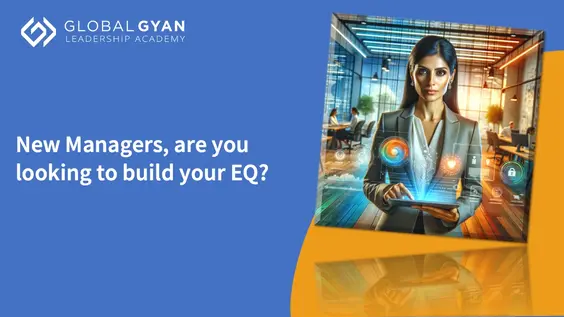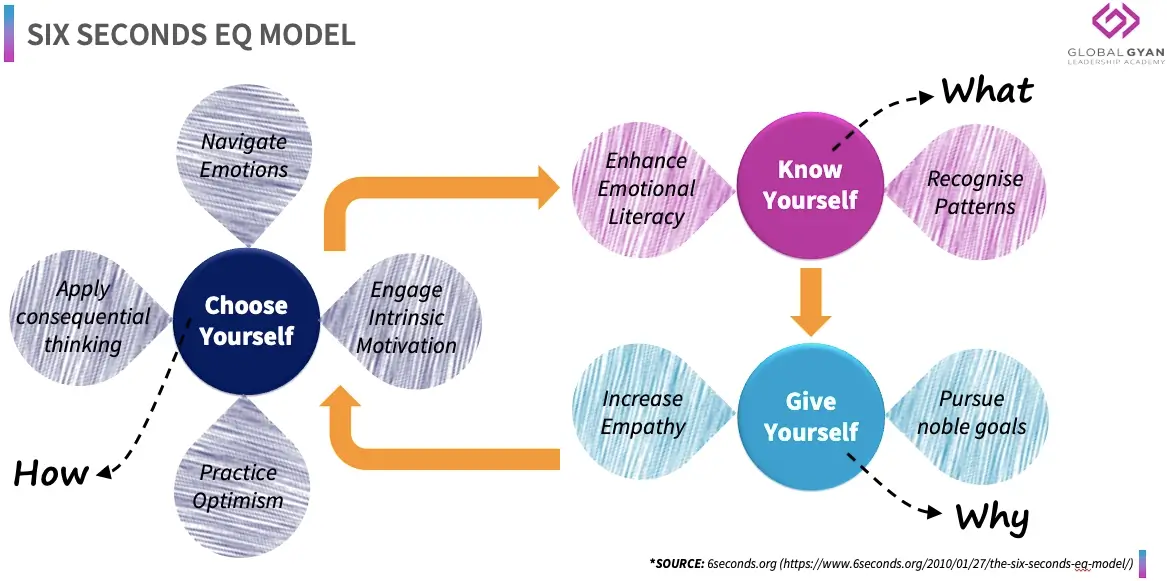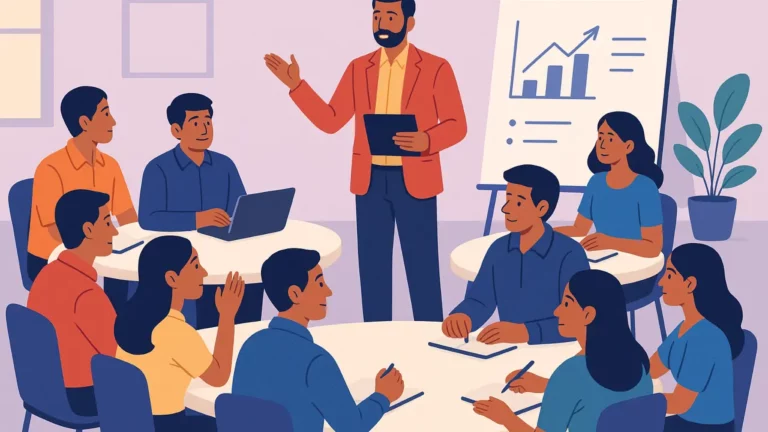How can New Managers Learn to Empathise Genuinely?


Emotional Intelligence (EI) or emotional quotient (EQ) as a term didn’t enter the corporate world with Daniel Goleman in the ’90s. While Goleman certainly popularised the theory, the origins of EI as a paradigm can be traced back to 1964. In fact, as early as in the 1950s, renowned American psychologist Abraham Maslow coined the precursory term “Emotional Strength”.
Why is EI important, you may ask? For starters, it is the key differentiator between a what makes a good leader and a great leader. It is what stands between you and your next promotion. It is what will tide you through torrential waters when you do eventually get promoted to leadership positions. And a high EQ will guarantee a 15-20% increase in your team’s performance. Who doesn’t want that?
But let’s be real. If EQ were that easy to cultivate, then experts won’t be scrambling to propose (& publish) new frameworks every other day. Especially for first-time managers, developing EQ is a steep slope that requires some learning and lots of trudging (patience). Take Sheetal’s case, for example. Sheetal (not her real name) was enrolled in one of our courses. During a session, she shared an anecdote that majority of the audience (also first-time managers) could relate to.
“I’ve been a manager now for roughly five months. Each day has been a new challenge for me. But the biggest of them is dealing with people. Before I took on the managerial role, no one told me that people management would be the one skill that will make my life easier. I’m still learning, but I’ve gained huge amount of respect for my previous managers. The position is one of immense responsibility and it gives the term ‘learn-on-the-go’ a whole new meaning”.
“Once I was dealing with a major professional crisis. Our department head had just resigned without notice and a lot of his work was distributed between a few managers, including myself. Overnight, I had 20-30 files and a hefty bunch of papers to proof for approval. I was putting in extra hours and then some to meet the deadline. It was still early days and I didn’t know my team very well. I had read up on team lunches and other team-building activities to create rapport but there was simply no time. I didn’t even have time to set my new cabin straight! One day, I was nose deep in my papers when a guy on my team, Suresh, came in and asked for a personal leave”.
“Now, Suresh was very important to my team. You could say that he was the central piece; he had my back when I wasn’t available. So I felt utterly helpless in that moment. I told him, ‘Suresh, you know what you mean to me and the team. Given all this new work that’s been thrust on me, is there any way you can put a hold on this request’? Suresh was flabbergasted, but after some thought, he said, ‘Sheetal, I don’t understand why you’re sorting out all this paperwork by yourself. You can always ask us, your team, for help, you know? And trust me, we do want to help you’”.
“It was my turn to be speechless now. In all my years of corporate life, I’d only helped people, my managers especially. But asking for help – that was new. Asking for help from strangers, even newer. But I thought to myself, what is the harm in trying? So I went out and spoke to my team candidly for the first time. I told them, ‘Guys, there’s some paperwork I need to get through within this week. Can all of you split the files between yourselves and write down your observations on post-it notes? That would be of great help to me’”.
“They immediately emptied my cabin of all the files and litter, and what seemed like weeks of work, was completed in mere days. I gave my team a treat and organised a lot of those team-building activities I’d researched on as a thank-you gesture, but I learned an important lesson that day – people are willing to help you, if you ask for it. Don’t let the ‘manager’ tag fill you with false hubris, you are as good as your team. Once I was filled with that sense of self-awareness, I was able to recalibrate my managerial senses”.
In this article, we will cover:
We often confuse emotional intelligence with accommodating the needs of others, but we forget that we need to recognise our own needs first and align them to our team’s needs to foster unequivocal synergy. As dynamic businesses bloom, the role of a manager has become fluid, which introduces new challenges but also offers great many respites, one of them being – abolishing the age-old social construct of “toughening up”. So, how can new managers build on emotional intelligence? Let’s look at three effective frameworks.
1. Mayer-Salovey-Caruso Ability Model
Before Daniel Goleman bandied around EI for corporates, psychologists Peter Salovey and John Mayer published a landmark article on the subject in the journal “Imagination, Cognition, and Personality” in 1990. They laid down an intrinsic framework called “the ability model”, which remains popular to this day. David Caruso later refined the model in 2002, which then came to be known as the Mayer-Salovey-Caruso Model or Mayer-Salovey-Caruso Emotional Intelligence Test (MSCEIT).
It is very important to understand that emotional intelligence is not the opposite of intelligence, it is not the triumph of heart over head — it is the unique intersection of both.
– David Caruso
Designed as a four-branch ability model, MSCEIT evaluates how well one uses emotions to perceive (oneself & others), facilitate thought and other cognitive processes (i.e. communicate feelings) and understand & manage one’s own emotions and those of others in different scenarios. For instance, a new manager in a fast-paced start-up will need to heighten their perception capabilities to be better attuned to their team’s emotional states.
2. Daniel Goleman’s EI Quadrant
A pioneer in the field of emotional intelligence, Daniel Goleman introduced the EI Quadrant in 1995, comprising of five key components: self-awareness, self-regulation, motivation, empathy and social skills. These were divided into four quadrants, based on leading oneself and leading others. Each of these dimensions, he said, strengthened a manager’s prowess to lead and influence their teams.
Because Goleman was one of the first to explicitly state that empathy was “integral to EI”, let’s take a moment to understand why it is so important for a manager to develop empathy and how they can draw a line between sympathy and empathy. Consider the following scenario: Dhruv is a graduate trainee on your team. On the second day of his new job, he runs into a roadblock with one of his tasks. He’s unable to debug a piece of code which is giving recurring errors. He comes to you for help. He says, ‘Sir, I’m unable to understand this code block. For the past four hours, I’ve gone through it line-by-line but I’m unable to figure out why it’s not working’. As his manager, how would you reply? Would you say:
- “Dhruv, it’s a shame you aren’t able to do this by yourself. With your exceptional academic background, I can’t believe you’ve wasted four hours of company time to resolve this issue. Put your university research skills to use and get back to me with a solution in the next hour, please”.
- “That’s quite a while you’ve been stuck on one problem, Dhruv. Why didn’t you come to me sooner? We could have figured out a solution together. What I suggest you do is – go to Ranjan (Dhruv’s team mate) and show him this code. He is our star coder, I’m sure he’ll be able to help. Do this for now and let me know if this issue gets sorted”. Dhruv thanks you for your advice and gets ready to leave, when you call out to him and say, “Dhruv, take good notes. Ranjan may not always be around to help you. These are small steps you can take to be self-reliant. And I do want you to be self-reliant, because I know you can do it”.
In the first case, you have sympathised with Dhruv. You acknowledge that he has a problem, you feel sorry that he has encountered this problem, but this, in turn, has engendered some frustration in you that a smart chap like him has run into a problem. At the end of your “talk”, the problem hasn’t gone away and Dhruv is none the wiser.
In the second case as well, you acknowledge that Dhruv has a problem, however, you make it known to him that you wish to help him resolve this issue – that his issues are not his alone. You give him useful advice and ask him to follow up, so that you’re sure he’s taken key learnings from this incident. His progress is important to you. That’s empathy.
3. The Six Seconds Model of EQ
Six Seconds, a non-profit organisation dedicated to emotional intelligence, developed a model based on three pillars viz. Know Yourself (or self-awareness, clearly understanding what you feel and do), Choose Yourself (or management, choosing how you react in situations) and Give Yourself (or direction, putting a vision and mission to action in your daily routine), covering eight key competencies between them:
- Recognising patterns of behaviour & reactions.
- Navigating emotions and making them your strategic strengths.
- Increasing empathy towards yourself & others.
- Exercising optimism to lead with proactive hope for endless possibilities.
- Enhancing emotional literacy to understand your own (and others’) complex feelings.
- Applying consequential thinking to evaluate your choices & costs associated with them.
- Seeking motivation from within (also called “intrinsic motivation”).
- Pursuing greater goals and working towards them daily.
Founder and creator Joshua Freedman has said that the primary motivation to design this model is to “connect what I say with what I really feel [and] to communicate authentically”. So, the next time you feel stuck fixing a people problem, look inward and incorporate this model in your actions to devise a feasible solution. We leave you with a template to put up in your workspace – just as a way to remind yourself that empathy starts with you.

What does it take to be a successful first-time manager? Having technical skills? Being adept at teamwork? Completing your tasks on time? Nay, it’s about managing people effectively, and people are driven by emotions. Instead of sympathising with them, start empathising with them today. The key to building high-performing teams that go on to become thriving communities is cultivating profound empathy and telling your team members, “We’ll get through this – together”!






Responses